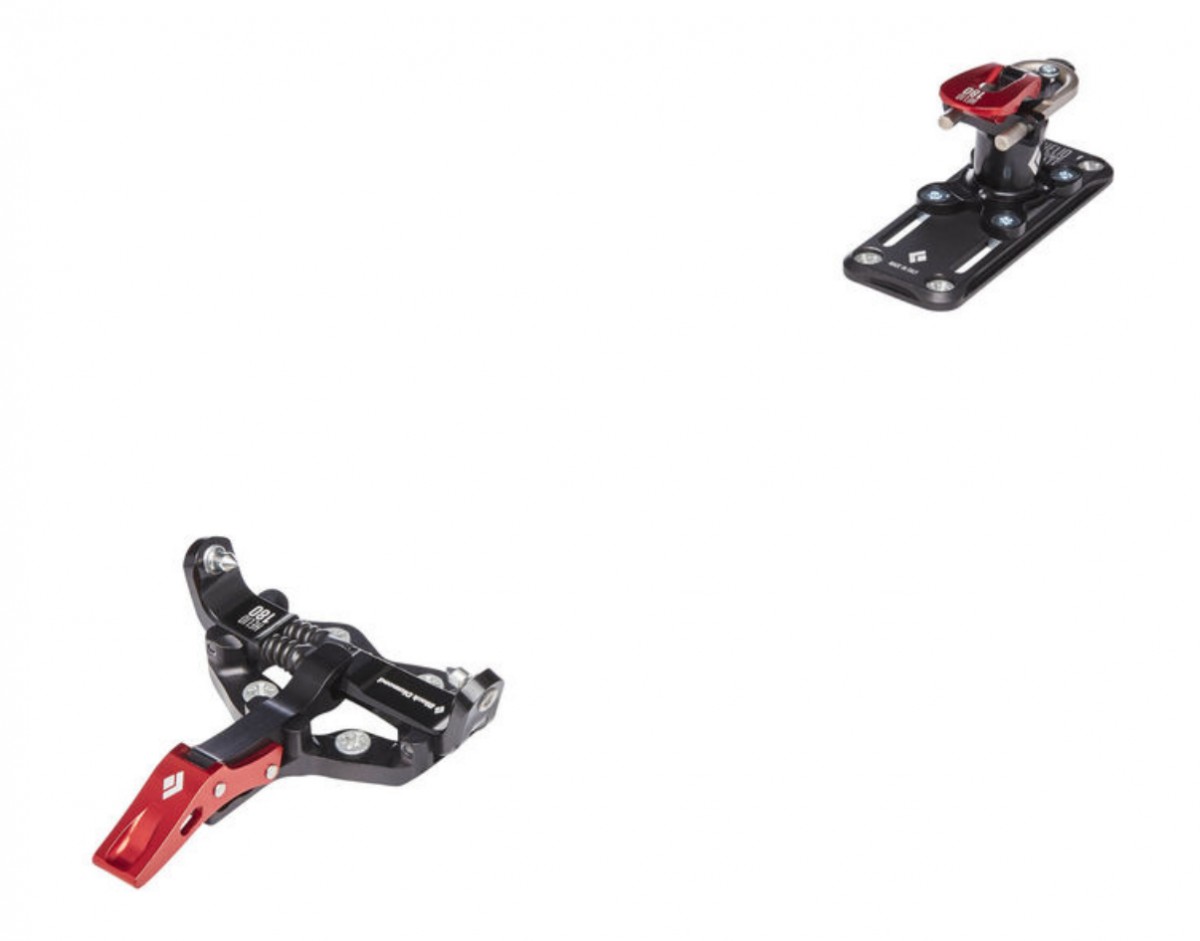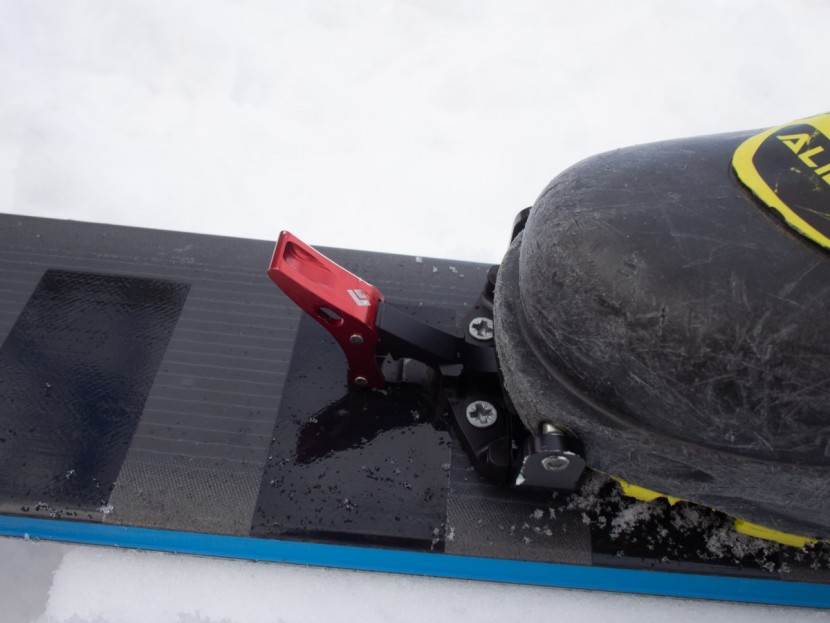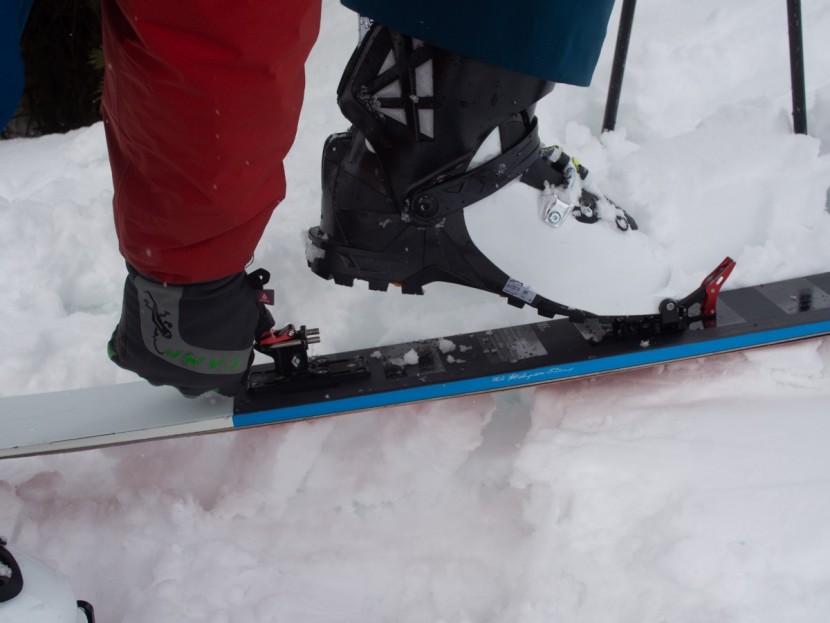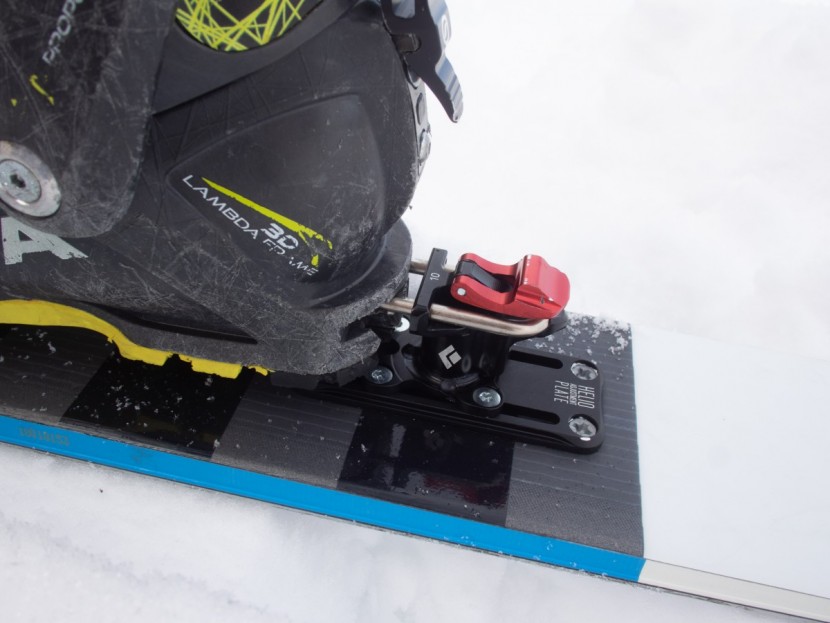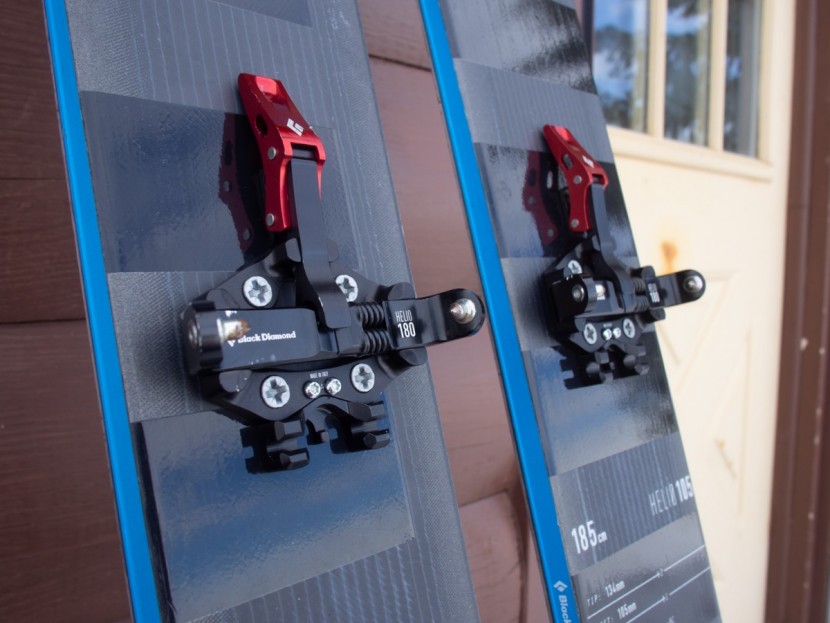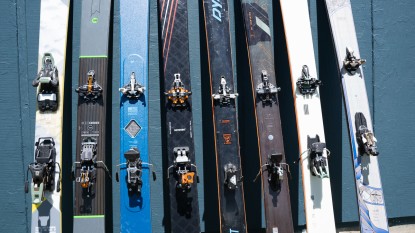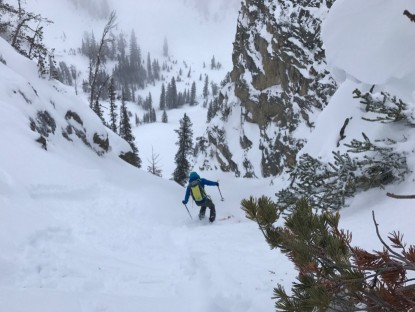Black Diamond Helio 180 Review
Our Verdict
Our Analysis and Test Results
The Black Diamond Helio 180 is a super light “skimo race” style binding for the masses. For many skiers in many situations, these ultralight all-around bindings are just the ticket. As compared to your “typical” tech bindings, some functionality and performance are limited. However, for many users, these compromises are worth the weight savings, as a pair of these bindings is a small fraction the weight of the heaviest tech bindings available. Compared to the “typical” tech bindings we see people using, the Helio 180 is well under one-third the weight. There are other ultralight bindings on the market, and we are working to test all those that are relevant and proven.
Touring Performance
Touring performance is related to, but separate from, weight. In assessing touring performance, we look at pivot range, propensity for icing, and heel lifters. The minimalist construction of the Helio 180 doesn't collect much ice and allows for full toe pivot range. However, there is only one heel elevation option. The heel elevator on the Helio 180 is roughly comparable to a lower version of most bindings' middle level. You can turn the Helio heel piece 180 degrees for a theoretical “flat on ski mode”, but your boot heel catches on the binding with nearly every step. It isn't really a viable option.
The fixed heel elevation will likely be something that keeps you from first considering the Helio 180. We suggest (and have tested, for decades) that modern light boots with great ankle articulation, when paired with even the most rudimentary of practiced and intentional skinning technique, negate the need for more elevation or elevation adjustment than the Helio 180 and other race bindings provide.
Downhill Performance
Users of the Helio 180 are generally non-discerning about the nuances of downhill performance. All that matters to these fans of the light and fast is that their boot stays on the ski. That is the case with the Helio. If you ski hard and fast enough to qualify for your own TGR film segment, you might notice some limitations to the Helio, and you might need that film crew and first aid on hand for the potential consequences of such energetic skiing in the backcountry.
We notice that the boot/ski connection is less robust with the Helio 180 than with the sturdier bindings. Many of these other bindings have more elaborate heel pieces that push your boot down and forward onto the ski surface (essentially…), lending a more connected feel and performance. Additionally, these heavier bindings have greater range and function of their release characteristics than the Helio 180. With the Top Pick Helio, you have to decide, at the time of purchase, if you want release value of 6, 8, or 10. Note, also, that these “release values” are not recognized with DIN third-party oversight. The Helio is not certified in any way to release; it will release, but it is not certified to do so. The release value numbers can be roughly correlated to one another, but are not intended to be used as “DIN” numbers.
Ease of Use
Simplicity generally correlates to “ease of use”. In this way, the Helio is pretty dang good. Stepping in and out is no different than any basic tech binding. Your heel level choice is made for you; there are no brakes to ice up. Simple, reliable, and easy to use.
It is in terms of ease of use that the Helio 180 edges ahead of the closest competitor. While testing the Helio, we had no issues with function. Early in our testing of a close competitor, we had one of the non Helio bindings become stuck onto a tester's boot. This tester literally kept the ski on his foot for over 10 miles of expedition exit and had to take the whole ski/boot/binding combination indoors with a hammer and punch to get it apart. There was no field fix possible. We had no such problem with the Helio 180. Otherwise, race-style bindings are similar in many, many ways.
Weight
It is right in the name. These are super light bindings. The “180” refers to the weight, in grams, of one complete Helio binding. Our scales verify this. We weighed each of our tested bindings to be 181 grams, including mounting screws; this is ridiculously light. Out of the box, they seem more like jewelry or the parts to a miniature race car than ski bindings.
This award winner is ultralight and is in good company among its peers. In our test, the remaining bindings are all quite a bit heavier. “Full function” bindings (featuring three heel risers, brakes, and adjustable release) are at least twice the weight of the Helio 180.
Durability
We have had no problems with the Helio 180. BD is relatively new to the ultralight binding game. However, we know that the Helio 180 is simply Black Diamond's re-badging of the proven ATK brand bindings. In screening the market and doing our pre-purchase research, we learned that ATK bindings have a durability track record in line with other skimo race-style bindings.
We continue to test all the bindings in our review. Our rigorous use has revealed no issues with the Helio 180, but we will keep trying.
Value
There are certainly less expensive bindings on the market. Our Best Buy winner, at retail, is cheaper than the Helio. The Helio asking price is more in line with the real robust bindings we tested; per ounce, the Helio is super expensive. For each gram you save, though, the value might be pretty darn good. Essentially, if you want bindings like this, the Helio 180 isn't prohibitively expensive. If you can spare some ounces, the Best Buy will be far easier on the wallet.
Conclusion
Your choice of these bindings is purely your own. Realize that there are some real limitations (release sophistication) and some not-so-bad limitations (heel lifters, brakes). Care in use will mitigate all of these issues. In closely assessing AT ski bindings, we have to look at a whole range of performance attributes. There are many different types of users and many different performance criteria. Most people will be looking at a variety of criteria in their shopping process. Our overall scoring rubric reflects this.
However, we must acknowledge that there is a large and growing subset of the backcountry skiing population whose binding criteria are pretty simple: “What is the lightest binding I can get that holds my foot on the ski for touring up and skiing down?” Release characteristics, touring heel elevators, and boot-retention “elasticity” for this growing, experienced, and thoughtful subset of the population simply aren't issues they concern themselves with; for them, the Helio 180 is the best choice. In fact, if you are one of those users and can commit to one model and size of boots for the life of your skis, the untested Black Diamond Helio 145 is the same as the 180 without length adjustment.

